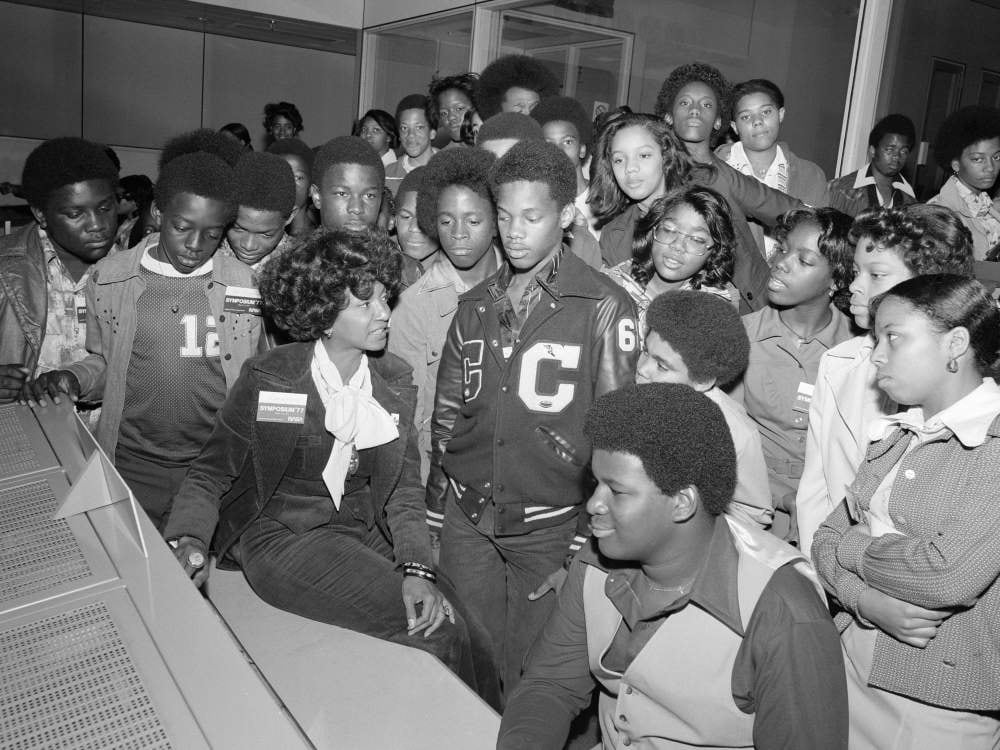Uncle Sam wants YOU for the Space Corps!
For most readers, this sentence probably stirs images of interstellar battles that humble even the most finely crafted Marine Corps recruiting commercial. This has led many to criticize — even mock — the Air Force’s nascent command. Others have sought to influence leaders in the Pentagon and on Capitol Hill as they construct the Space Corps’ institutional architecture.
For example, Air Command and Staff College professor Brent Ziarnick recently suggested that the Space Corps should adopt naval rank if it is to achieve the “fiercely independent sense of identity” necessary to succeed.
Few could disagree with such a powerful, seemingly innovative proposal. And I must admit, as an officer in the Navy, the professor’s pitch caught my eye. But I soon realized Ziarnick’s proposition is misguided, if not dangerously naïve.
The difference between a Navy “lieutenant” and an Air Force “captain” is no panacea for an effective fighting force. The Space Corps can and should distinguish itself as an independent entity within the Air Force.
Moreover, the Space Corps could certainly draw proven concepts from the Navy — perhaps its historical model of leadership, which reaches more deeply than the fleeting novelty of our rank — in pursuit of this goal.
But the future of the Space Corps depends on far more than naval gazing. To succeed, the Space Corps must first confront a hard reality: The military faces a looming anthropological catastrophe.

Birth rates in the United States have slowed for four consecutive years, and experts project that 2030 will be the first year in history that the population over 65 will outnumber those under 18.
Moreover, 87 percent of young Americans between the ages of 17 and 24 are ineligible for service, and only 13 percent of this age group will consider serving.
This dynamic will encumber the Air Force’s ability to identify and recruit capable Space Corpsmen. And the situation grows bleaker once you consider that the Space Corps will require a higher degree of technical skill than other branches, which are failing to hit recruiting targets for the first time in years.
Even worse, the federal government’s response to this problem has been inconsistent and self-defeating.
On one hand, leaders have shuttered alternative sources of talented recruits. In 2016, the Pentagon froze the highly successful “Military Accessions Vital to the National Interest” program, which expanded the Army’s talent pool by targeting non-citizen recruits with critical language or medical skills.
When it came to attrition, performance, education and advancement over the course of an enlistment, MAVNI recruits regularly outperformed their domestic counterparts. But as is often the case in the military, merit was not enough.
On the other hand, branches have lowered standards for drug use and physical fitness while simultaneously earmarking many millions of dollars for recruiting and retention bonuses.
These efforts to create and preserve an increasingly professionalized military workforce have overlapped with an era marked by rising disciplinary problems in the armed forces. But has anyone stopped to ask whether these variables are related?

The military is targeting prospective accessions that, until recently, were not interested in serving either because (a) they were below standard due to criminal history, drug usage or other problems; or (b) their motivation to make more money in the private sector outweighed a desire to serve in uniform.
This undoubtedly affects the ethos of a volunteer fighting force. The only questions left are how, and to what degree?
With the Space Corps, we can quarantine the spread of these problems. Leaders must consider the type of young men and women the new command needs to flourish and then actively work to bring them into the force.
In support of this goal, the Space Corps should adopt a more sustainable and innovative approach to recruiting based on the MAVNI approach. But instead of focusing on language and medical skills, Space Corps recruitment should be part of a broader effort to counter the dwindling domestic numbers of Science, Technology, Engineering, and Math (STEM) graduates.
This initiative would simultaneously breathe life into the Space Corps’ quasi-diplomatic function, which some experts prioritize over future capabilities designed to wage war.
The Space Corps also might draw inspiration from the Navy’s “Mod Squad” model, pushing a greater degree of command authority to lower ranks in order to reinvigorate the culture of independent and invested leadership that was common to the early sea service.
But today’s military leaders appear more fascinated with faux innovation than anything else. The notion that “naval rank” will produce a healthy Space Corps is merely a magical footnote to an age-old problem: Thought leaders, who are often (ironically) buoyed by rank or title alone, find comfort offering superficial solutions that border on insight.
It doesn’t matter whether we call members of the Space Corps “lieutenants” or “captains,” “space corpsmen” or “airmen.”
What matters is whether the architects of the Space Corps are willing to lean into the future and boldly go where no bureaucrats have gone before.
That journey carries risk. But bold leadership courses through the veins of American history, and future generations should not bear the cost of today’s timidity.
RELATED

Assigned to the Washington Navy Yard, Lt. Joshua C. Fiveson serves as a Senior Appellate Counsel in the Appellate Government Division, Office of the Judge Advocate General. He’s also a graduate of Harvard Law School and a former fellow with the Harvard Kennedy School’s Center for Public Leadership. All views expressed in this article are the author’s own and do not necessarily represent those of the U.S. government, the Department of Defense, Navy Times or its staffers.




